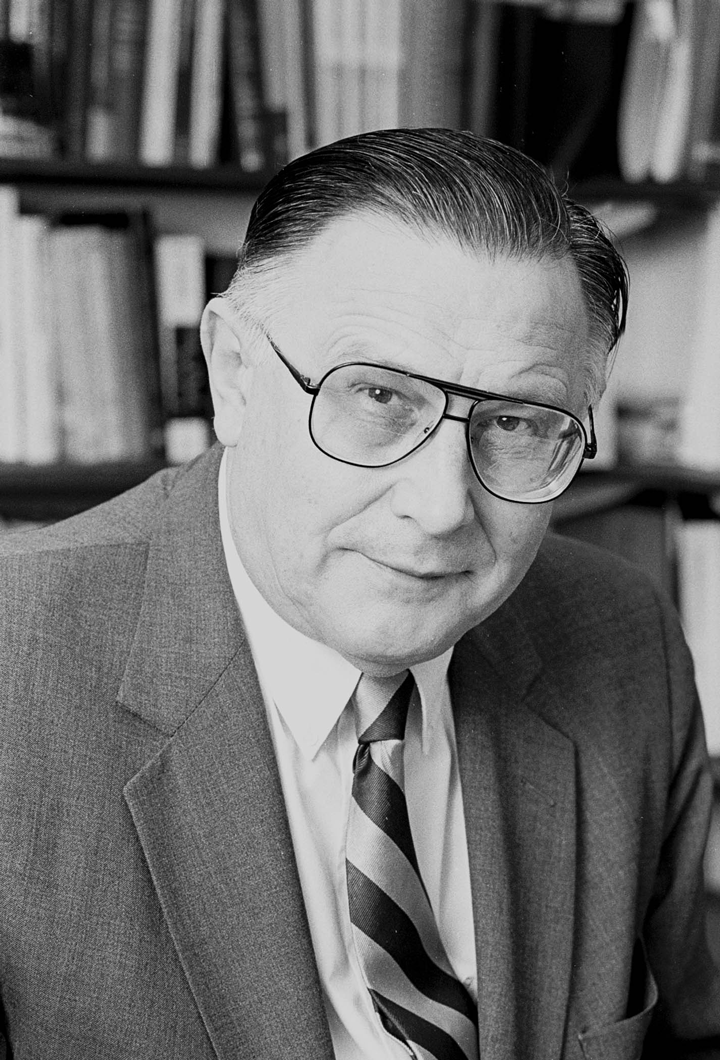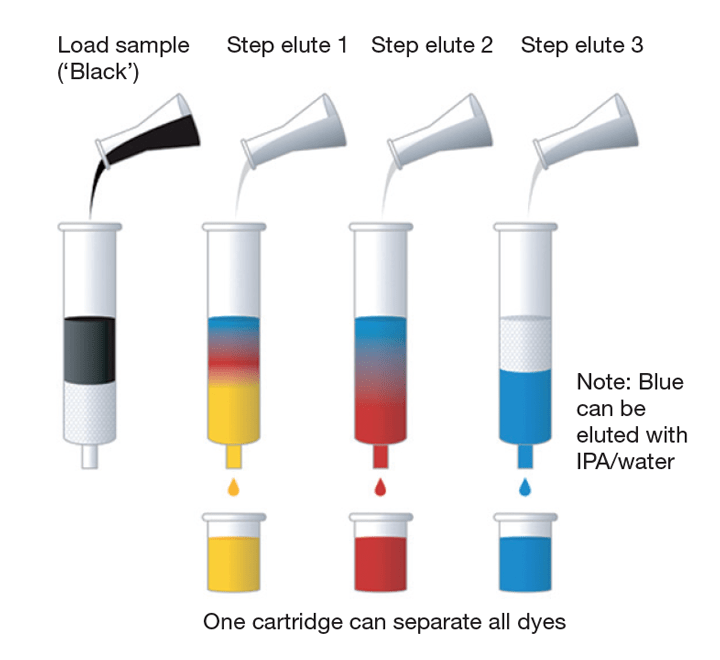Csaba Horváth – Degrees of Separation
Claudia Flavell-While explores the contribution of separation scientist Csaba Horváth

“The three most significant accomplishments of the 20th century that fundamentally changed our life are considered to be computers, cloning and chromatography”, said András Guttman, of Diversa Corp, at Csaba Horváth’s rememberance service.
Many have put together lists of the most significant advances of the 20th century, particularly around the turn of the millennium. Computers appear near the top of just about every list. Cloning, too, made a fair few top-tens. But chromatography?
Few people outside a chemistry lab have any real understanding of what chromatography is, or what it is used for. It’s hard to imagine many people outside the science community judging chromatography as a life-changing technology.
Behind the scenes
This is because it is a technique strictly used ‘behind the scenes’. The workhorse of analytical chemistry, chromatography is extensively used in healthcare, quality control, and many other sectors too. Separating complex mixtures of compounds to isolate the active ingredient would be impossible without chromatography – making it not only hard to identify drugs in the first place, but also to know how much active ingredient is contained in a dose. Hospitals use the technique to identify poisons or drugs of abuse in blood samples of patients; environmental laboratories rely on it to monitor water, soil and animal blood for contaminants; forensic scientists apply it to analyse samples from a crime scene; industrial chemists rely on it to determine the composition of petroleum oil, check the level of additives in foods, monitor pesticide contamination, and the list goes on.
The process is so sensitive that the characteristic patterns of peaks not only identify different molecules in a sample, but can often identify the particular source of a sample, thanks to variations in industrial processes that give slightly different compositions of chemicals, and variations in the growth of biological materials from one batch reactor to another. Forensic scientists and environmental monitoring agencies use this to track down the exact source of a particular sample.
People may not know chromatography, but without it, our world would be a much scarier place – environmental monitoring, quality control in food and pharmaceuticals, medical diagnosis and drugs discovery would all suffer phenomenally.
Gas to liquid
The main form of chromatography used, until the 1960s at least, was gas chromatography, where a sample is vapourised and injected onto the head of a chromatographic column. Gases transport it through a liquid stationary phase on which the components of the sample can separate out. But the process only works with relatively volatile and stable molecules – involatile molecules and those that are easily damaged by heat cannot be separated this way. Unfortunately, that includes the vast majority of organic and biological molecules. Converting these fragile molecules into less-fragile derivatives adds time, expense, and considerable uncertainty because the process itself changes the sample.
The solution is liquid chromatography – and for making this a fast, effective and efficient process, we owe thanks to “Mr HPLC”, Csaba Horváth, the pioneer and father of modern high performance liquid chromatography.
Born in Szolnok, Hungary, in 1930, Horváth studied chemical engineering at the Technical University in Budapest and briefly worked in the university’s department of organic chemical technology, before the upheaval of the failed Hungarian revolution prompted him to emigrate to West Germany.
Horváth spent two years at a pilot plant for Farbwerke Hoechst in Frankfurt, followed by a stint in Hoechst’s R&D lab. He first started taking an interest in separation processes during the early 1960s when – fuelled by his success in pigments R&D – he enrolled at Goethe University in Frankfurt for a PhD programme in physical chemistry. At the university he found the well-known Hungarian separations scientist István Halász, with whom he’d previously worked at the Technical University Budapest. Horváth’s PhD thesis investigated the effectiveness of porous support coatings or adsorbent layers to increase the surface area of capillary or packed columns, in a bid to improve the efficiency of open-tubular gas chromatography columns. The experience proved to be useful: not only were his support-coated open tubular columns widely used for several years, but the experience proved useful when, a few years later, Horváth set about designing new kinds of columns and stationary phases for liquid chromatography units.
People may not know chromatography, but without it, our world would be a much scarier place
Chemeng to life sciences
His PhD under his belt, Horváth emigrated to the US where he found a position as physics research fellow with Harvard Medical School’s lab at Massachusetts General Hospital in Boston. He was not to stay long at Harvard Med – the next move, to Yale University, followed in 1964 – but the experience of working closely with biologists and biochemists made Horváth think about the many ways in which chemical engineers could contribute to the life sciences.
“Csaba did not always think along conventional lines, could easily argue both sides of a dispute, and would often come at a problem in an unexpected way,” remembers Gary Haller, one of Horváth’s colleagues at Yale. “I am sure this was part of his originality in his scientific work.”
It was at Yale that Horváth put those thoughts into practice. His PhD had given Horváth a thorough understanding of gas chromatography, and the recent process improvements such as the use of capillary columns and the opportunities they opened for the development of new and better analytical instruments had significantly improved the performance of the process.
Horváth set about applying these recent advances to liquid chromatography. The first important improvements were to increase the pressure in the chromatography column by adding a pump, and to increase the density of the column packing by using silica-based materials with a smaller particle size. The result was smaller columns that still achieved considerably better separations.
“Within two years, he developed a new system consisting of a high-pressure pump, a new type of injector, a narrow-bore
(1 mm id) column, and a UV detector with a small-volume cell – ie, the first modern liquid chromatograph,” remembered Leslie Ettre, research affiliate at Yale and a fellow member of the ‘Hungarian chromatography mafia’, in Horváth’s obituary in 2004. “Without question, this work represented the beginning of HPLC; in fact, most of the terms used universally today, such as HPLC, isocratic elution, or pellicular packing originated from him.”

A deeper understanding
These advances were only the start, though. Horváth sought to better understand the physics and chemistry that made separations in liquid chromatography possible in the first place. He recognised – unlike some – just how powerful reversed-phase liquid chromatography could be. By using a non-polar stationary phase and a mildly polar mobile phase such as water, Horváth further increased the effectiveness of the separation process. The process is known as reversed-phase HPLC, and remains the most commonly-used form of HPLC to this day. Horváth’s advances improved the speed and degree of separation achieved by liquid chromatography well over a hundredfold – and more recent advances have added further to this.
Carrying on from his early interest in how chemical engineers could contribute to the life sciences, Horváth in his latter years mainly applied himself to developing separations processes geared for large biomolecules. Capillary electrochromatography and electrophoresis were particular interests in this context.
“Csaba worked extensively with [the pioneering biotech company] Genentech during the company’s formative years,” says Steven Cramer, professor of chemical engineering at Rensselaer Polytechnic Institute and a former PhD student of Horváth’s. Indeed, another of Horváth’s students, Ann Lee, is now Genentech’s vice president for process development.
Fond memories
Former students and colleagues alike remember Horváth fondly not only for his scientific achievements, but as a remarkable man. “He lived for his work, and he had very high expectations, but he also loved to travel – and he loved to cook,” remembers Cramer. Indeed there are tales of Horváth treating the chemeng department to huge pots of goulash, and challenging everybody to try and empty the pot. “Csaba considered cooking the highest form of chemistry and chemical engineering,” Guttman said at his rememberance service.
Another thing everyone remembers Horváth for are his communication skills. “His presentations were always the highlight of national and international conference,” Guttman added. “Large auditoriums were always filled with people who wanted to see and listen to his lectures. He was always fascinated by the power of words and spent painfully long hours on manuscripts to find the most appropriate words or expressions and if he didn’t find one good enough, he made them up. He kept on saying that every word in a paper is a drop of blood.”
Originally published in October 2010
Recent Editions
Catch up on the latest news, views and jobs from The Chemical Engineer. Below are the four latest issues. View a wider selection of the archive from within the Magazine section of this site.




